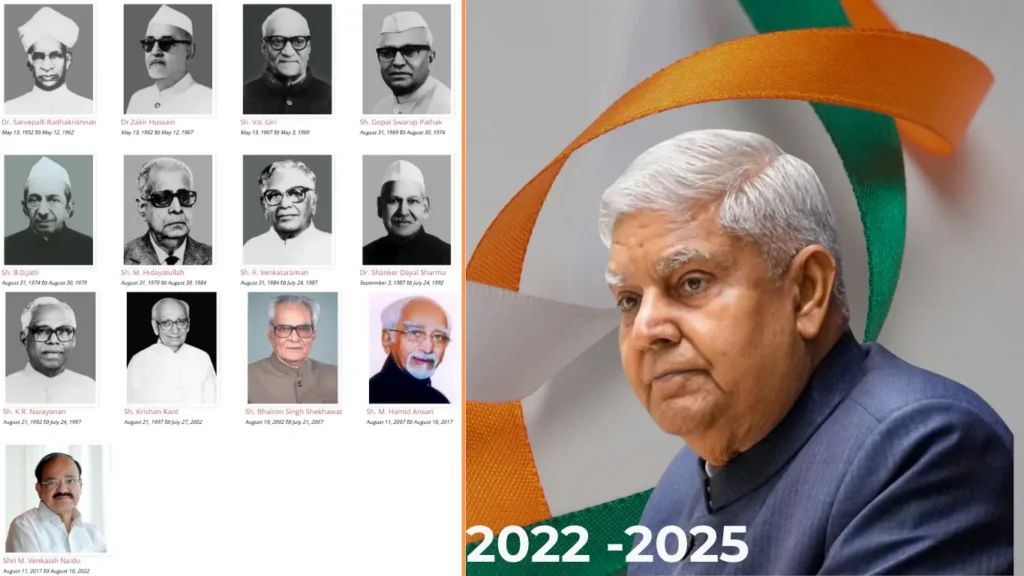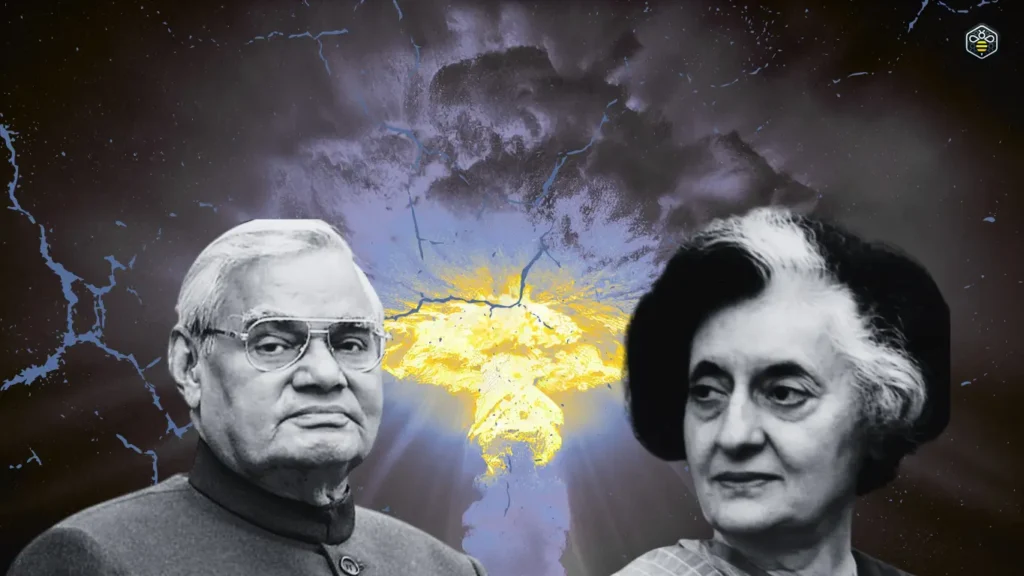
The Vice President of India is the second-highest constitutional office in the country after the President. Though largely ceremonial, this position holds immense significance in ensuring a balance in legislative processes and constitutional functioning.
But how much do we really know about the Vice President? This blog unpacks the human side of the office, key constitutional facts, lesser-known trivia, and answers to the most searched queries like the salary of Vice President of India and the minimum age of Vice President.
Let’s dive into the fascinating world of India’s second-in-command.
1. Who is the Vice President of India?
The Vice President of India is the ex-officio Chairperson of the Rajya Sabha (Upper House of Parliament). This position is modeled after the U.S. Vice President and plays a crucial legislative role in Indian governance.
Until recently, Jagdeep Dhankhar served as the Vice President of India. However, he resigned from the post citing health reasons. In a heartfelt letter to President Droupadi Murmu, Mr. Dhankhar stated that in order to prioritize healthcare and follow medical advice, he is stepping down with immediate effect (Source: The Hindu).
A successor has not yet been announced, and the constitutional process to elect the next Vice President is expected to begin soon.
2. What is the Role of the Vice President of India?
While the President is the ceremonial head of the state, the Vice President serves a dual role:
Acts as Chairperson of the Rajya Sabha.
Takes charge as President in case of vacancy (due to resignation, death, or impeachment) until a new President is elected.
Key Responsibilities:
Ensuring the smooth functioning of Rajya Sabha proceedings.
Acting impartially in the House.
Participating in ceremonial state functions and diplomatic interactions.
The Vice President doesn’t have executive powers like the Prime Minister or President but remains a constitutional bridge during transitions.
3. Eligibility Criteria: What is the Minimum Age of Vice President of India?
To be eligible for the position of Vice President, a candidate must:
Be a citizen of India.
Be at least 35 years old (Minimum age of Vice President).
Be qualified to be elected as a Rajya Sabha member.
Not hold any office of profit under the Indian government or any state government.
These qualifications ensure that the Vice President is politically experienced and constitutionally sound.
4. Election Process of the Vice President
Unlike the President, who is elected by both houses and state legislatures, the Vice President is elected solely by the members of both houses of Parliament using a secret ballot and proportional representation system.
Key Facts:
No state legislatures are involved.
Electoral college = Members of Lok Sabha + Rajya Sabha.
Election is conducted by the Election Commission of India (Source: ECI).
The term of the Vice President is 5 years, but they can be re-elected any number of times.
With Jagdeep Dhankhar’s resignation, the process to elect a new Vice President is expected to take place shortly.
5. Salary of Vice President of India
This is one of the most searched queries online, and understandably so!
As of 2025, the salary of the Vice President of India is INR 4,00,000 per month (Source: PRS India). Apart from the salary, the Vice President is entitled to:
Free furnished residence
Staff and allowances
Medical, travel, and security facilities
However, when acting as President, the Vice President draws the President’s salary, which is INR 5,00,000 per month.
6. History of the Vice President Post in India
The post of Vice President was established in 1950 after India became a republic. The first Vice President was Dr. Sarvepalli Radhakrishnan, a celebrated philosopher and scholar who later became the President.
Notable Vice Presidents:
Dr. Radhakrishnan (1952–1962)
Zakir Hussain (1962–1967)
Bhairon Singh Shekhawat (2002–2007)
M. Venkaiah Naidu (2017–2022)
Jagdeep Dhankhar (2022–2025, resigned)
This list features political veterans who significantly contributed to Indian democracy.
How many Vice Presidents have become President?
Only six Vice Presidents have gone on to become President of India, not seven as commonly believed. These include:
Dr. Sarvepalli Radhakrishnan
Dr. Zakir Hussain
V. V. Giri
R. Venkataraman
Shankar Dayal Sharma
Dr. Shankar Dayal Sharma (Source: President of India official site)
7. Vice President vs President: Key Differences
| Feature | Vice President | President |
|---|---|---|
| Position | 2nd highest | Highest |
| Elected by | MPs only | MPs + MLAs |
| Term | 5 years | 5 years |
| Salary | INR 4 lakh/month | INR 5 lakh/month |
| Powers | Legislative | Executive & Ceremonial |
| Office | Rajya Sabha Chairperson | Supreme Commander |
This comparison helps highlight the distinct roles of the two top dignitaries.
Human Side: Life of a Vice President
While the office is constitutional, the person behind it leads a life of immense responsibility and pressure. The Vice President regularly meets foreign dignitaries, scholars, and lawmakers. They have a dedicated staff and live in Vice President’s House in New Delhi, which has historical and architectural significance.
Outside of politics, many Vice Presidents have been academicians, lawyers, poets, or freedom fighters. This mix of intellectual and political strength defines the dignity of the office.
FAQs About Vice President of India
How many Vice Presidents has India had?
India has had 14 Vice Presidents since 1952, including Jagdeep Dhankhar, who resigned in 2025.
Who is the current Vice President of India?
The Vice President position is currently vacant following the resignation of Jagdeep Dhankhar in July 2025.
Where does the Vice President live?
The Vice President resides at 6, Maulana Azad Road, New Delhi, a colonial-era residence.
What happens if both the President and Vice President are unavailable?
If both are unavailable, the Chief Justice of India may be appointed as the Acting President.
Is the Vice President part of the Cabinet?
No, the Vice President is not part of the Cabinet unless he holds another office.
What is the salary of Vice President of India?
As of 2025, the Vice President of India earns INR 4,00,000 per month, excluding allowances and perks. If acting as President, they receive INR 5,00,000.
What is the minimum age to become Vice President of India?
The minimum age required to become the Vice President of India is 35 years.
Who elects the Vice President of India?
Members of both the Lok Sabha and Rajya Sabha elect the Vice President using a proportional voting system.
Can a Vice President become President?
Yes, if the President resigns, dies, or is removed, the Vice President acts as President until a new one is elected.
How many Vice Presidents have become President?
Six Vice Presidents have become Presidents of India, not seven as commonly believed. Source: President of India – Former Presidents
Final Thoughts
The Vice President of India may not be in the daily headlines, but their presence is vital to the democratic and legislative framework of the country. Understanding this role helps us appreciate the structure and depth of Indian democracy.
Whether you were curious about the salary of Vice President of India, or the minimum age of Vice President, we hope this blog clarified all your doubts.
Stay informed, stay aware.
If you found this post helpful, share it with your friends or students preparing for competitive exams like UPSC or SSC. Knowledge is power, after all!

